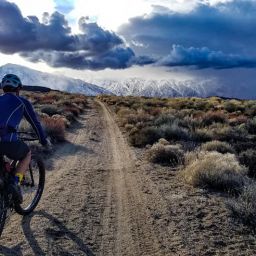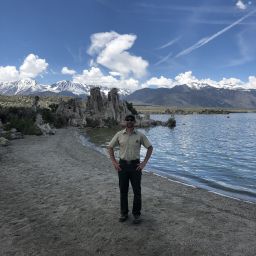
Forest Planning
The inception of Friends of the Inyo was spurred by the 1980’s planning process for the Inyo National Forest. In 2013 the Inyo National Forest began revisions to their Forest Plan, under a new planning rule adopted by the U.S. Department of Agriculture in 2012. True to our history, Friends of the Inyo is committed to engaging in this important and precedent-setting opportunity until the final plan is completed. After the signing of the plan we will engage in Plan implementation, working with the agency to achieve its goal and objectives into the future.
The Inyo National Forest is home to the iconic Mt. Whitney, the Ancient Bristlecone Pine Forest, the Ansel Adams and John Muir Wilderness Areas, the headwaters of the Owens River, the second largest roadless land acreage in California, and unparalleled opportunities for recreation, scenic vistas, and solitude. This new management plan is the guiding document for the Inyo National Forest, and will determine the fate of these idyllic landscapes. The Inyo is one of eight “early adopter” forests for this new rule, along with the Sierra and Sequoia National Forests. This process will set the precedent for how all other national forests will revise their management plans in future years.


Beginning in 2013 Friends of the Inyo’s board and staff compiled and submitted extensive comments to the Forest’s Topic Papers – foundational documents covering everything from timber to meadow health to grazing and wilderness. Throughout 2013 and 2014 we commented on the Forest Assessment, the Need for Change, Desired Conditions and the Preliminary and Final Wilderness Evaluations, as required under the 2012 Planning Rule.
On October 1, 2014 Friends of the Inyo staff compiled and submitted extensive Scoping comments. Our comments covered everything from at-risk species to Wilderness (view a map of areas to be recommended as wilderness here) and Wild and Scenic River recommendations.
On May 27, 2016 The Forest Service released the Draft Forest Plan and Draft Environmental Impact Statement, opening a 90 day comment period which closed August 25th, 2016. Find our comments throughout the planning process and other pertinent attachments here.
In early 2017 the Regional office decided to split the Inyo National Forest from the Sierra and Sequoia and proceed with revisions for a final EIS, while the Sierra and Sequoia will undergo a supplemental EIS process.
In July of 2017 the USFS released a preview of changes made to the EIS that would be reflected in the FEIS and Final Land Management Plan. They cover resource issues regarding Sustainable Recreation, WSRs, Aquatic and Riparian and Species of Conservation Concern.
On August 3, 2018 the USFS released the Final Plan, Final EIS and draft Record of Decision. The Forest Service hosted a public meeting on August 7, 2018. On Oct 2, 2018, along with our partners we filed an objection on the final plan highlighting it’s deficiencies. Take a look below at the diversity of comment letters and engagement we have had across the Eastern Sierra landscape. We also filed interest party status on October 23, 2018. The USFS considered our objections as part of a 3 day public meeting held in Bishop Feb 19-21, 2019. We worked with other objectors and the Forest throughout March and April to find solutions and work on additional changes. Many of these changes were reflected in the final land management plan that went into effect in November of 2019 after the October 2019 signing of the Final Record of Decision by the Forest Supervisor.
If you don’t have time to read our comments you can check out this Sierra Nevada Forest Planning Coalition Fact Sheet for more information on specific topics and issues.

Take Action
Updates
ACTION ALERT: E-Bikes Comment Period Times continue to be tough and the Trump Administration is advancing their most controversial ideas for our public lands. As we track their work, we took notice of their most recent move to propose allowing motorized mountain bikes, or e-bikes, on non-motorized trails–trails that human-powered recreationists such as mountain bikers, hikers, hunters, and equestrians have fought for years to keep non-motorized. This change threatens decades of hard work to designate quality non-motorized trail opportunities in communities across the West. Adding insult to injury, BLM proposes to enact these changes with no environmental analysis under NEPA–despite…
In early March of 2020, Stewardship Director Alex Ertaud sat down with Adam Barnett, the Inyo National Forest’s Assistant Public Services Staff Officer. This conversation dives deep into the ins and outs of the two organization’s working relationship. It is always a pleasure to chat with Adam and I hope you enjoy! Alex Ertaud, Stewardship Director: I am here with Adam Barnett, of the Forest Service. Thank you for sitting down with me Adam. Just to start things off, when was the first time you came to the Eastern Sierra? And I guess in this case, the Inyo National Forest….
Action Alert: Inyo County Road Maintenance and Motorized Mixed Use Comments are needed on Inyo County Road Maintenance and Motorized Mixed Use on National Forest Roads. On Jan 13, 2020 the Inyo National Forest provided notice that it is considering granting easements and special use permits to Inyo County for eight roads on the White Mountain and Mount Whitney Ranger Districts of the national forest. The roads considered for easements are portions of Death Valley, Onion Valley, County, and Foothill Roads. Roads considered for special use permits include Division Creek, McMurray Meadows, Coyote and Mazourka Canyon. This proposed action, if…





